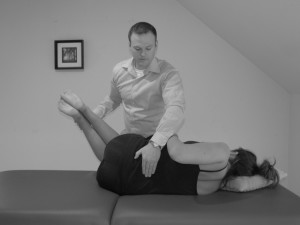
Who is your doctor? Think about that. When you have low back pain or some other kind of pain the first thing most people do is wait to see if the pain will go away. When the pain does not go away the next action on the list is to call your doctor to get an appointment. This is an “old school” way of thinking in today’s healthcare model, and this is how people with low back pain or other kinds of pain get stuck and never get help. In a study by Fritz and Childs {Spine (Phila Pa 1976). 2012 Dec 1;37(25):2114-21)} it was determined that only 7% of people who went to their doctor for low back pain were given a referral to physical therapy despite the evidence that physical therapy drastically reduces total costs of care and recovery time for the patient. That is amazing to me! Think about that, only 7% of people were ever given a referral to physical therapy even though the stats show that physical therapy lowers costs and recovery time for the patient. Therefore 93% of people were most likely given pain meds or told to give it more time to see if the pain would go away. This is how healthcare fails.
I am trying to get a change in thinking so that is why I asked, “Who is your doctor”? I am a doctor of physical therapy, therefore I am a doctor. Most of the time when people say they are going to the doctor because of low back pain or some other injury type pain, they really mean their primary physician. This needs to change. As the study by Fritz and Childs notes above, low back pain sufferers are only sent to physical therapy 7% of the time by their physician even though recovery time and costs are reduced with physical therapy. As a physical therapist I am the expert in pain, tissue healing, and musculoskeletal injuries. I have a doctoral degree that justifies me being the first person to care for low back pain and other painful injuries. When I think of going to see a physician it is for broken bones, diseases, or for being sick. When someone goes to the doctor for low back pain or some other painful injury the only action that can be taken is to be given pain meds, which in its self is a problem, or to be given a script for physical therapy. We know based on the research only 7% of low back pain sufferers are given a script for therapy even with all of the known benefits. Going to see a physician is not necessary anymore. In Ohio and throughout the rest of the states, there is something called direct access. This is the ability for someone to come directly to physical therapy without a physician referral. This law is very powerful and very important because it allows the experts in the field of pain, healing, and injuries to work autonomously, which we know helps reduce costs and speeds up healing time. So when someone has low back pain or some other painful injury, why be in the 7%. I am your doctor. I am the expert in healing of low back pain, neck pain, shoulder pain, knee pain, and any other musculoskeletal injury. Why wait and see a physician when you can come to Wright Physiotherapy.




